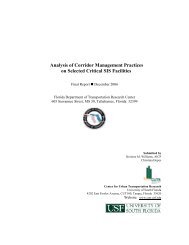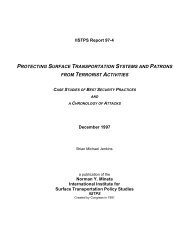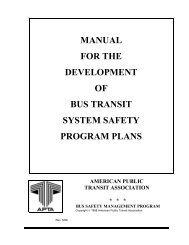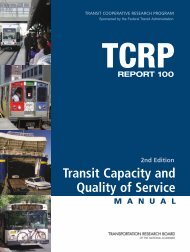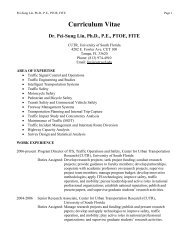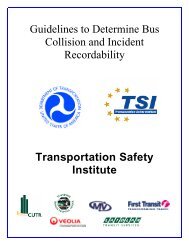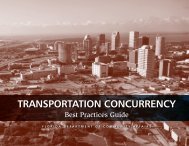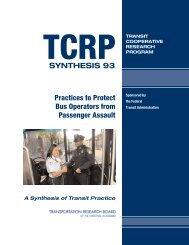a technical guide for conducting pedestrian safety assessments
a technical guide for conducting pedestrian safety assessments
a technical guide for conducting pedestrian safety assessments
You also want an ePaper? Increase the reach of your titles
YUMPU automatically turns print PDFs into web optimized ePapers that Google loves.
56 A TECHNICAL GUIDE FOR CONDUCTING PEDESTRIAN SAFETY ASSESSMENTS FOR CALIFORNIA CITIES<br />
APPENDIX D<br />
BLOCK RATIO INDEX<br />
BLOCK RATIO INDEX: MEASURING CONNECTIVITY<br />
Jennifer Dill (2004) presents the following measures of street connectivity:<br />
➜ Intersection density<br />
➜ Street density<br />
➜ Average block length<br />
➜ Link/node ratio<br />
➜ Connected node ratio = intersections/ (intersections + cul-de-sacs)<br />
➜ Alpha index = number of actual circuits/ maximum number of circuits<br />
Where a circuit is a finite, closed path starting and ending at a single node<br />
➜ Gamma index = number of links in the network/ maximum possible number of links between nodes<br />
➜ Effective walking area = number of parcels within a one-quarter mile walking distance of a point/ total number of<br />
parcels within a one-quarter mile radius of that point<br />
➜ Pedestrian route directness = route distance/ straight-line distance <strong>for</strong> two selected points<br />
Dill determined that the <strong>pedestrian</strong> route directness (PRD) measure is the best connectivity measure to reflect<br />
minimizing trip distances and route directness. However, it is difficult to use in research and policy. The PRD may be<br />
applied in practice by randomly selecting origin-destination pairs and calculating a sample <strong>for</strong> the subject area.



